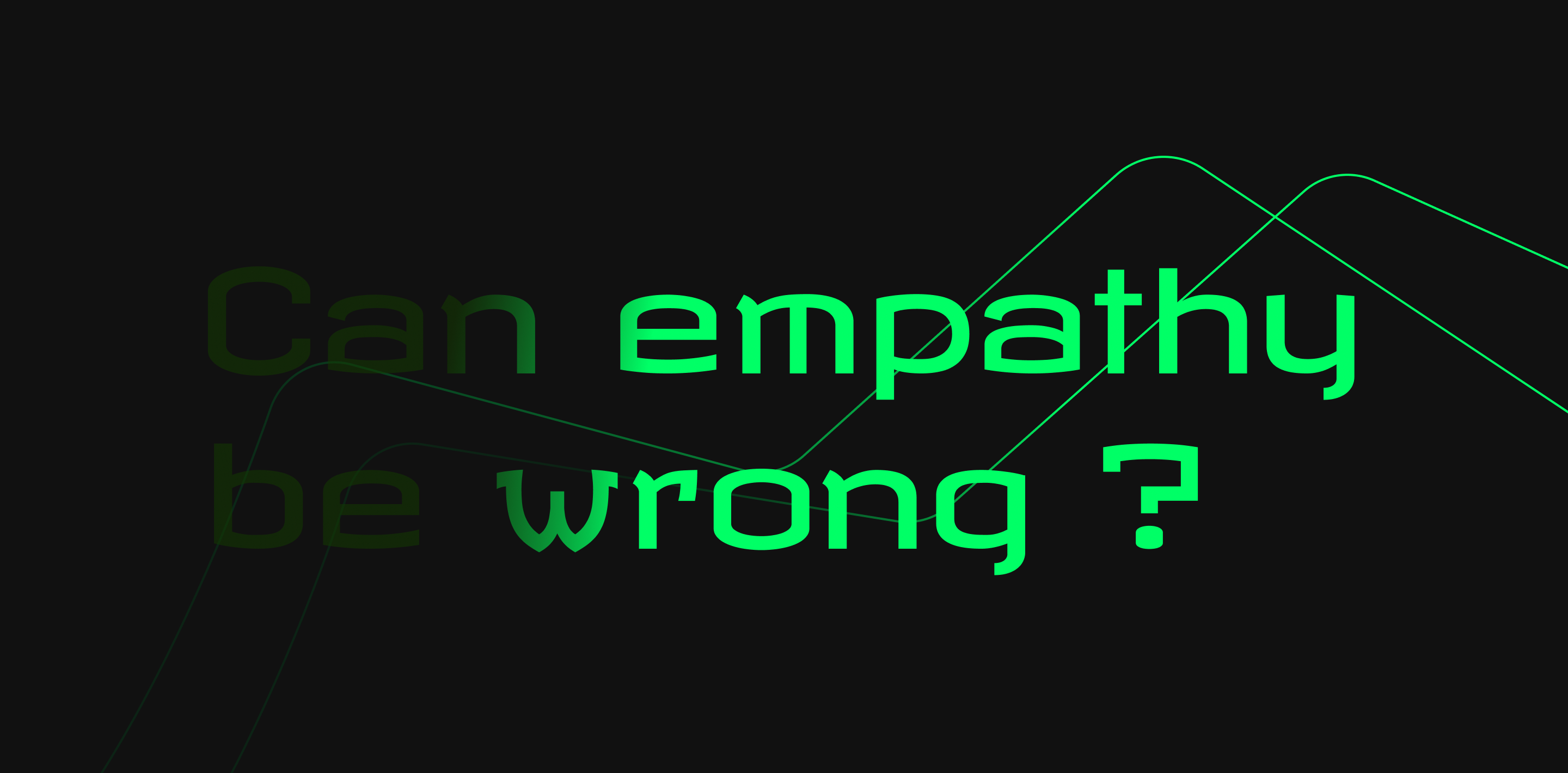Great designers come up with exceptional solutions when they attempt to immerse themselves into fully understanding almost everything about their users. I'm talking about their needs, pain points, why they do certain things, and so on, just so they can experience what their users feel, to be able to come up with useful solutions.
Empathy is way more than just "walking in someone else's shoes."
I think of empathy as putting aside how you would walk while walking in someone else's shoes. I mean, there's a possibility that I would still walk the way I walk even if I walk in your shoes. However, I'd experience and feel what you do if I walk the way you walk while walking in your shoes, some tongue twister, huh?
Okay, enough about shoes and walking. Let's talk about what empathy is about and what it is not and how understanding and practicing it can help us as product designers come up with more human-centered solutions.
What Empathy is about
Empathy is about detaching yourself from every bias. It is developing a blank slate, emptying your mind and thoughts concerning the product you're about to work on, before embarking on the research phase to understand users' needs and what they feel, to gain clarity to what they want without tainting it with what you think they would like.
Writing Princess (one of my favorite say-it-as-it-is-writers) describes it as having your behavior, bias, and power dynamic dismantled before you can even begin to understand another's subconscious thoughts and motivations.
To buttress that, Helen Riess talks about how suspending your involvement in interactions to better understand what's happening provides a mindful awareness of the interaction instead of being lost in your own thoughts and feelings.
What it is not
"In design, people tend to view empathy as a bulleted item in the research phase. Recruit people. Interview them. Take some pictures. Get pain points. Translate pain points into insights. Boom! Empathy. Um, not really"
"In design, people tend to view empathy as a bulleted item in the research phase. Recruit people. Interview them. Take some pictures. Get pain points. Translate pain points into insights. Boom! Empathy. Um, not really" — Writing princess
It goes wrong when it stops at just understanding the pain points of the users because then there's a possibility that you can project what you think will be the "best solution" to that pain point, and boy! will it blow your mind when you realize what you came up with in no way addresses the pain points of your users.
A while ago, a friend of mine muttered under her breath that she was hungry; my instincts kicked in, okay, fine, you got me, I wanted to impress her... and I secretly went to buy her food. I got her seafood (with shrimps, prawns, and all), she didn't eat it; why? It turns out she's allergic to seafood.
The instance above is simply what people think empathy is. Sorry, it isn't, it's just one level of empathy, and that's why there's a 95% chance it can go wrong, just like it did with the seafood.
Three levels of Empathy
This brings me to the three levels of empathy. Dr. Goleman and Paul Ekman, both renowned psychologists, identified three levels of empathy:
Cognitive/Intellectual Empathy
Emotional Empathy
Compassionate Empathy
Now let's do a brief breakdown to give you a clearer picture of each level and how you can attain them.
Cognitive/Intellectual Empathy
This is what most people think empathy is. Cognitive empathy simply is knowing how the other person feels and what they might be thinking.
Think of it in terms of the design process as when you talk to random people, and they tell you a couple of things that you jot down, and voila! it feels as if you understand them, but the big question is, "How well can you truly understand someone you don't know?"
Take the seafood scenario as an example, I knew my friend was hungry, but I didn't think she was allergic to seafood.
In her article "Stop Bastardizing Design with False Empathy," Writing Princess wrote about how some companies don't even take the time out to talk to real people. They just check out made-out personas and similar products, and they feel that's all it takes to build empathy.
Nah, that's always never enough. We all need to be reminded that we're designing for real people, humans! Empathy is built when we learn to talk to people with the mindset of understanding them.
Emotional Empathy
This is when you feel physically along with the other person, as though their emotions were contagious. You can attain this level of empathy as a designer by interviewing people and making an effort to immerse yourself in what they feel.
It is essentially being intentional about building a connection between you and the person you're talking with to understand how they feel, and at the same time, making a conscious effort not to project your personal opinions, experiences, and thoughts into that conversation. Sounds intense, huh? But it's attainable.
Compassionate empathy
With this kind of empathy, we not only understand a person's predicament and feel with them but are spontaneously moved to help if needed.
This is the level we should strive for as product designers when building empathy because it encompasses the previous levels with a touch of action. I describe it as a combination of
Knowing what the other person is feeling.
Feeling what they are feeling
Acting upon it.
In Closing
Empathy needs to be built over time. I mean, when I realized what it means to be empathetic, I recognized how much intentionality it demands; yeah, it looks like a whole lot of work, scratch that, it is a whole lot of work. But as long as the ultimate goal is to keep building human-centered products, practicing empathy at all levels is inevitable, and we can not allow it to go wrong.
References
What is empathy? Learn about three types of empathy by Becka Borody
Stop Bastardizing Design with False Empathy by Writingprincess
The Science of Empathy by Helen Riess

